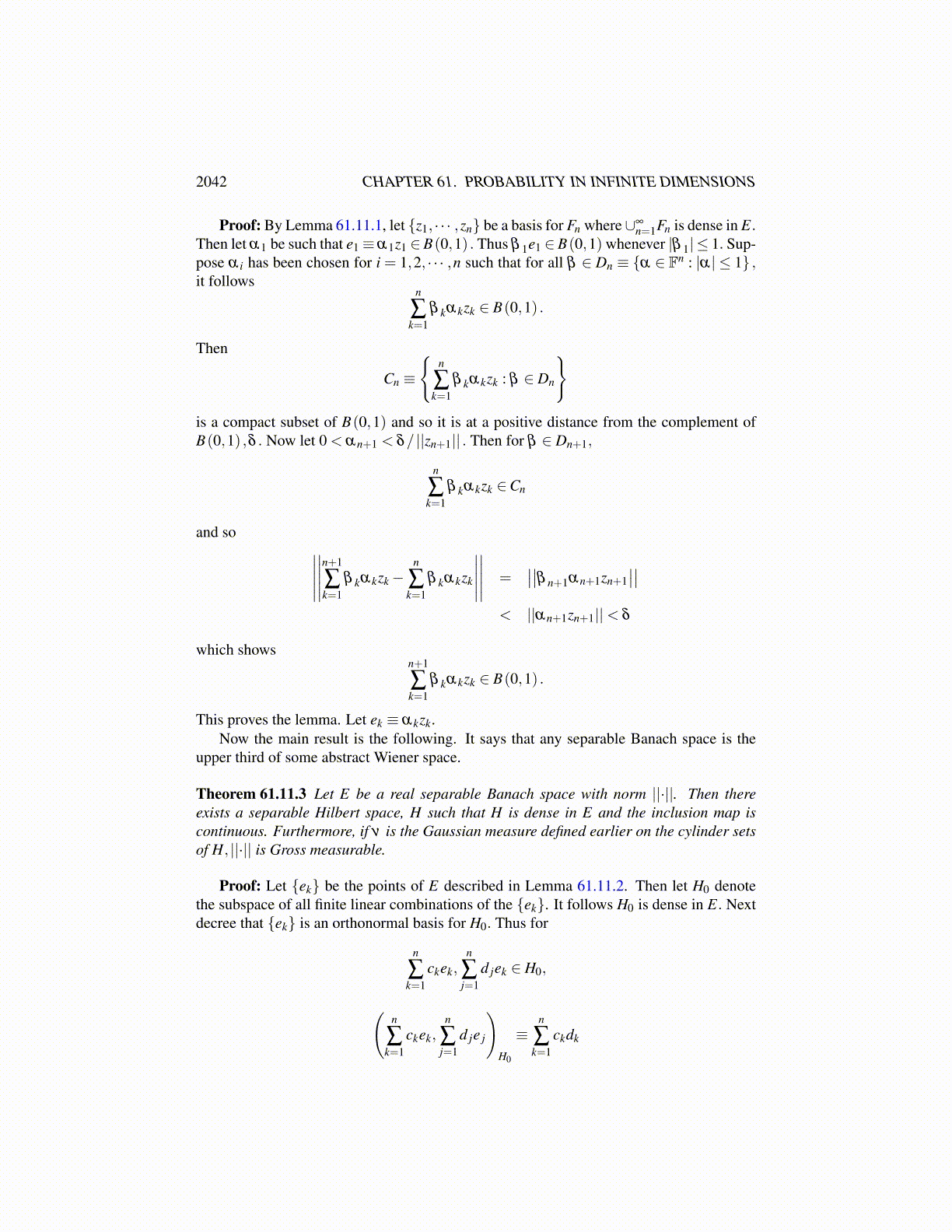
2042 CHAPTER 61. PROBABILITY IN INFINITE DIMENSIONS
This has shown that
P({
ω ∈Ω :∣∣∣∣Sn (ω)−Spm (ω)
∣∣∣∣> 2−m})< 2−m (61.9.47)
for all n > pm. In particular, the above is true if n = pn for n > m.If{
Spn (ω)}
fails to converge, then ω must be contained in the set,
A≡ ∩∞m=1∪∞
n=m{
ω ∈Ω :∣∣∣∣Spn (ω)−Spm (ω)
∣∣∣∣> 2−m} (61.9.48)
because if ω is in the complement of this set,
∪∞m=1∩∞
n=m{
ω ∈Ω :∣∣∣∣Spn (ω)−Spm (ω)
∣∣∣∣≤ 2−m} ,it follows
{Spn (ω)
}∞
n=1 is a Cauchy sequence and so it must converge. However, the set in61.9.48 is a set of measure 0 because of 61.9.47 and the observation that for all m,
P(A) ≤∞
∑n=m
P({
ω ∈Ω :∣∣∣∣Spn (ω)−Spm (ω)
∣∣∣∣> 2−m})≤
∞
∑n=m
12m
Thus the subsequence{
Spn
}of the sequence of partial sums of the above series does
converge pointwise in B and so the dominated convergence theorem also verifies that thecomputations involving the characteristic function in 61.9.45 are correct.
The random variable obtained as the limit of the partial sums,{
Spn (ω)}
describedabove is strongly measurable because each Spn (ω) is strongly measurable due to each ofthese being weakly measurable and separably valued. Thus the measure given as the lawof S defined as
S (ω)≡ limn→∞
Spn (ω)
is defined on the Borel sets of B.This proves the theorem.Also, there is an important observation from the proof which I will state as the following
corollary.
Corollary 61.9.15 Let (i,H,B) be an abstract Wiener space. Then there exists a Gaussianmeasure on the Borel sets of B. This Gaussian measure equals L (S) where S (ω) is thea.e. limit of a subsequence of the sequence of partial sums,
Spn (ω)≡pn
∑k=1
ξ k (ω)ek
for {ξ k} a sequence of independent random variables which are normal with mean 0 andvariance 1 which are defined on a probability space, (Ω,F ,P). Furthermore, for anyk > pn,
P({
ω ∈Ω :∣∣∣∣Sk (ω)−Spn (ω)
∣∣∣∣> 2−n})< 2−n.